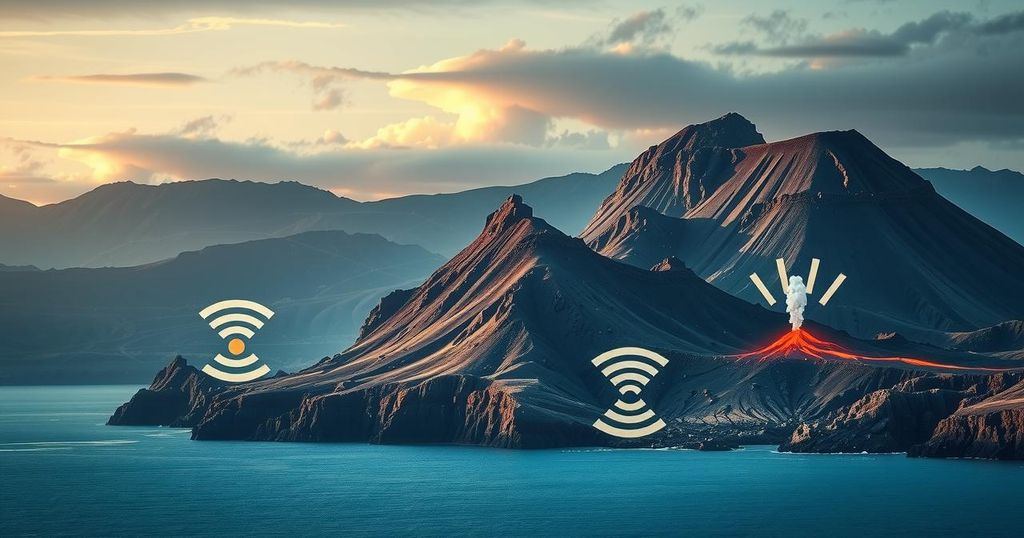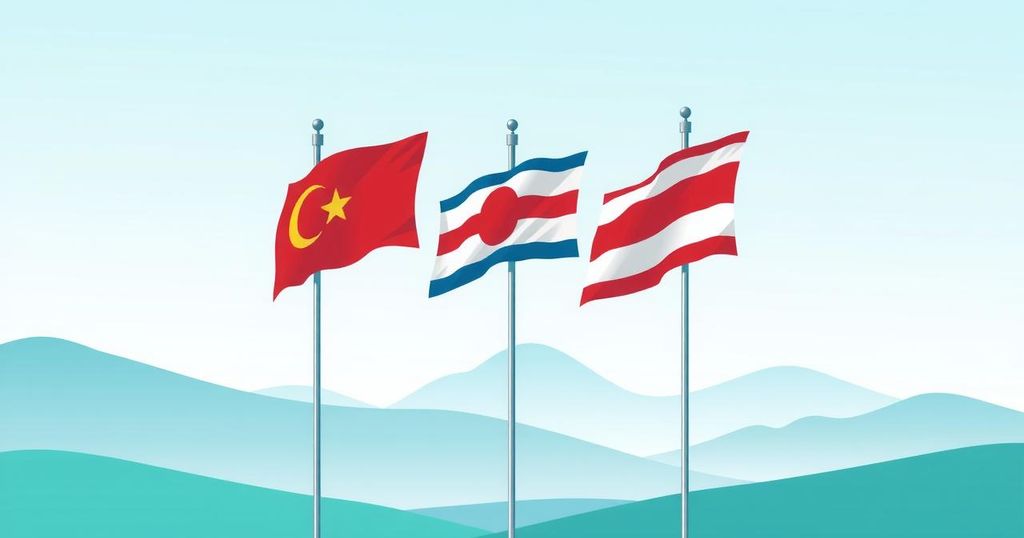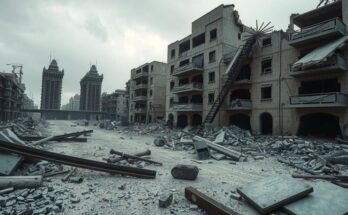Santorini, Greece, has reported over 7,700 earthquakes since January, with the latest significant tremor occurring on February 9. Experts express caution regarding potential larger seismic events, prompting emergency preparedness among residents. Concerns extend beyond Greece, with fears of a tsunami in Israel, although the likelihood remains low according to experts.
Seismic activity around Santorini, Greece, significantly intensified on February 9, highlighted by a 5.0 magnitude earthquake recorded 15 kilometers southwest of Arkessini, Amorgos. This tremor marked the strongest seismic event since the 5.2 magnitude quake on February 5, raising alarms among both local residents and earthquake experts regarding the potential for an even larger seismic event to occur in the region.
Vasilis Karastathis, the Director of the Geodynamic Institute, shared cautious yet optimistic insights regarding the recent tremors, noting, “Since the day before yesterday, a better rhythm has started, a slower rhythm in the earthquakes. This has been maintained.” Nonetheless, he acknowledged that the possibility of a larger earthquake should not be disregarded.
The local populace experienced a surge of anxiety due to the ongoing seismic activity. Residents of Santorini and nearby islands began preparing for emergencies, often keeping essential items in their vehicles overnight. Furthermore, the sustained tremors resulted in mass evacuations, with thousands of locals and tourists departing Santorini in the preceding weeks.
Professor Panagiotis Karydis, a specialist in Anti-Seismic Constructions, underscored the role of the earthquake’s epicenter in predicting potential destruction. He explained that “an earthquake from the northeastern side of Santorini, at 6 Richter, in my opinion, will create much smaller problems than one at 4.5-5 Richter from the area of the Caldera.” His remarks emphasize the significance of the quake’s origin point.
In light of the seismic activity, experts have increased their surveillance efforts, including the installation of additional seismographs for enhanced monitoring. Oceanographic studies are also on the agenda to uncover the factors contributing to the persistent earthquake swarm on the island.
The swarm began around January 26, resulting in an alarming number of recorded earthquakes—over 7,700—as reported by Kathimerini. This figure includes nearly 6,000 quakes detected in the maritime areas surrounding Santorini and adjacent islands.
Gerasimos Papadopoulos, a seasoned seismologist, provided analysis of the current seismic sequence, stating, “We have reached the critical point. We have the first case, if the 5.2 Richter was the main one.” He emphasized the necessity for ongoing evaluation to determine whether the seismic activity is receding.
The implications of these seismic events extend beyond Greece, as fears of a potential tsunami in Israel have increased. Consequently, Israel convened an emergency meeting of the National Security Council to address this concern, with officials evaluating the threat level in conjunction with relevant government bodies.
Dr. Efraim Laor assessed the tsunami risk, indicating that the likelihood of a wave reaching Israel from Greece is minimal. He articulated, “In any case, if an earthquake of more than 6.5 degrees occurs on the island, then there will definitely be a tsunami, but it is not at all certain that it will reach Israel.”
The region’s geological complexities have drawn significant attention, as the area between Santorini and Amorgos is classified as highly active by seismologists. It contains substantial faults, which are indicative of tectonic activity, as highlighted by research from Terra.
Historical context adds further urgency to the current situation; a devastating 7.7 magnitude earthquake in 1956 led to catastrophic destruction across Santorini, Crete, and parts of the Eastern Mediterranean, accompanied by a tsunami reaching heights of nearly 30 meters.
In summary, Santorini is experiencing heightened seismic activity, with over 7,700 earthquakes recorded since January. Both residents and experts express concern about the possibility of larger tremors, prompting heightened emergency preparedness. Experts continue to monitor the situation while historical precedents remind of the significant risks associated with large earthquakes in the region.
Original Source: www.jpost.com




